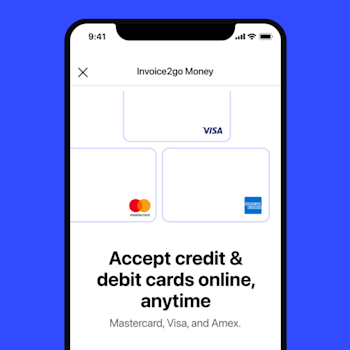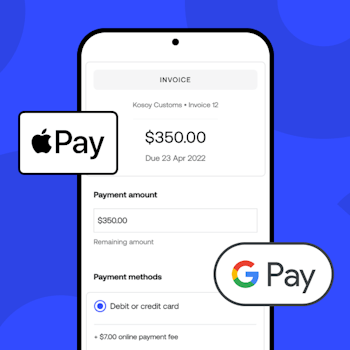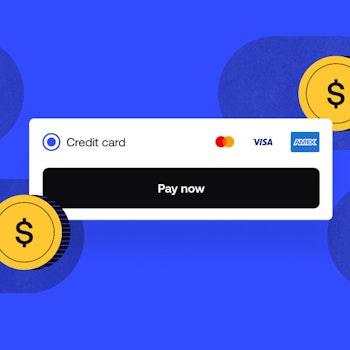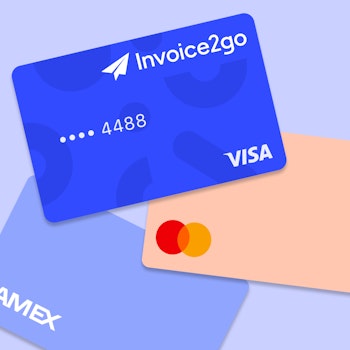
Everything freelancers and small business owners need to know about the new stimulus package
On Monday, December 21st, Congress finally passed a massive $900 billion COVID-19 relief bill. While you can laugh at all the memes about the $600 stimulus checks, there is some seriously good news on the horizon for freelancers and small business owners – including $285 billion for small business payment protection and the expansion of the CARES Act.
He’s a straightforward recap of what’s in this bill for you. Read on to learn the latest information for individuals, freelancers and solopreneurs, as well as small businesses.
Important note: this story is continually developing. It was last updated at 11:00 am PST on February 23rd.
Important Update February 2021: Biden adapts the Paycheck Protection Program to better serve the nation’s smallest businesses
On February 22, 2021, President Joe Biden announced important revisions to the nearly $2 trillion COVID-19 relief bill to allow more money to go to the small businesses that need it most. While the Paycheck Protection Program provided some relief, “a lot of these mom-and-pop businesses got muscled out of the way by bigger companies who jumped in front of the line,” Biden said.
To prevent this from continuing, Biden announced that only businesses with fewer than 20 employees can apply for the program over a 14-day period that begins Wednesday, February 24, 2021, and ends March 10, 2021. Approximately 98% of small businesses have fewer than 20 employees and this two-week application period aims to allow lenders to focus on serving them.
The Biden administration is also revising the program’s loan calculation formula to increase the odds that independent contractors and self-employed professionals will get loans. Under the current system, many of these businesses were declined or approved for as little as $1.
Provisions that bar small-business owners from the program if they have a felony conviction or are delinquent, or have defaulted on their federal student loans in the past seven years are being eliminated. Small-business owners who aren’t U.S. citizens but documented residents of the country can now apply for loans using their individual taxpayer-identification numbers.
Click here to learn more.
Your $600 stimulus payment is coming
If you got a stimulus payment earlier this year, you’re going to get a second one. Here’s what you need to know:
Payments will be $600 per adult who made less than $75,000 in 2019. The IRS will still use your 2019 tax return to determine your eligibility. You will also receive up to $600 for each eligible dependent under 17. That means, for example, if you’re a family of 4 and have 2 children under 17 and declared less than $150,000 on your 2019 tax return, you should get $2,400.
While exact dates have not yet been set, Secretary of Treasury Steven Mnuchin announced that the first payments will be dispursed before the end of 2020. You will receive your stimulus payment the same way you received the previous one. If the IRS doesn’t have your bank account information, you will likely get a check or prepaid debit card in the mail.
You can now view the status of your stimulus payment on the IRS website. For more information, you can also read more in this official press release for the IRS.
That Pandemic Unemployment Assistance (PUA) has been extended with an additional $300 per week
PUA covers freelancers, part-timers, and other professionals typically ineligible for state-funded unemployment. This program has now been extended until March 14th, 2021.
If you haven’t reached your maximum benefit by March 14th, 2021, your extension will continue until April 5th, 2021. During that time, the federal government will include $300 extra each week to the amount you’re currently eligible for.
Don’t qualify for PUA? You can still get an extra $100
Some freelancers and part-time workers may not qualify for PUA because they’re eligible for state unemployment through one of their jobs. For example, if you worked part-time at a restaurant and freelanced on the side, you would likely not meet eligibility requirements.
Now, as long as your freelance work made more than $5,000, the new law adds an extra $100 weekly payment in addition to the $300 weekly federal benefit – $400 per week. This benefit is expected to begin as soon as your state reaches an agreement with the Department of Labor. So stay tuned!
Economic Injury Disaster Loan (EIDL) Advances may return
It’s important to know that the EIDL program has two parts – the loan and the advance. Loans are capped at $150,000 per business, and advances are capped at $10,000 – $1,000 per employee. That means, if you’re a freelancer or company of one, you could claim $1,000. However, earlier this year, the advance – which doesn’t need to be repaid – ran out of funds and stopped accepting applications.
Now, this popular Economy Injury Disaster Loan Advance may make a comeback. The new bill is providing EIDL with $20 billion, so applications may reopen soon. Keep an eye out and check back to this page for updates.
Essential updates freelancers and small business owners need to know about the new Payment Protection Program
There seems to be a lot of good news for small businesses regarding the new PPP. Tax uncertainty – which was a major criticism early this year – has been mostly clarified. Here’s the breakdown:
Businesses can borrow up to $10 million. As long as that money is used for expenses like payroll, rent, and utilities, that money can be forgiven.
With the new PPP, small businesses can use loan money to buy supplies from vendors and get protective equipment. They can also use the funds to repair property damaged ‘due to public disturbance’ – a reference to this year’s protests over police brutality and racism.
Expenses paid for with loan money are now tax-deductible. All eligible business expenses can now be deducted from your taxes, whether you use loan money or other funds. That means, if you paid your $100 utility bill with money from your PPP loan, you can once again deduct it.
There’s some more good news. Businesses that have borrowed $150,000 or less with PPP, check this out. You now will only need to submit a one-page certification with straightforward financial information to certify loan forgiveness.
Initially, the CARES Act designated up to $10,000 of each Economic Injury Disaster Loan as an advance that did not have to be repaired. However, that amount would be docked from the forgiveness of a business’s PPP loan – meaning companies would have to pay back the $10,000. Under the new bill, that money will be completely forgiven. If you’ve been making payments on this debt, those funds should now be returned to you.
If you’re worried about loan forgiveness, there is information that can put your mind at ease. Many small businesses that took out money earlier this year have cited that the forgiveness process has gone smoothly.
Who’s eligible for the New Payment Protection Program (PPP)?
You may have read the news earlier this year about the public outcry due in response to restaurant chains, drug makers, and other more wealthy businesses collected taxpayer-funded loans.
The new program has tighter restrictions so that small businesses that need this money, get more of it. There is also money earmarked for community development financial institutions that are minority-owned, have less than 10 employees, or operate in low-income communities.
Here are some of the requirements to apply for PPP:
- Companies must show that revenue is down 25% or more from the previous year. If you’re a new business, you can still apply by showing revenue is down 25% or more from an earlier quarter in 2020.
- If you’ve already applied for PPP, you must wait 90 days before reapplying.
- Your business can’t have more than 300 employees or be publicly traded on the stock market.
What are the loan limits for PPP?
If you’ve already applied for PPP, you have the opportunity to apply again. Here’s the breakdown of what you can expect to borrow based on your business and how much you’ve already borrowed:
- Hotels and restaurants can borrow up to 3.5x of payroll. Other businesses can apply up to 2.5x.
- Originally PPP loans were up to $10 million; however, this time the cap may be lower depending on your business. For example, seasonal businesses, new businesses, and companies with multiple locations have a $2 million loan cap.
- If you’ve already applied for a PPP loan, your new loan is also capped at $2 million. The total amount of both your loans can’t exceed $10 million.
It’s our mission at Invoice2go, a Bill.com company, to amplify the voices of small businesses and independent professionals worldwide. Keep checking back here for the latest. We want to make sure you and your business get the most out of this package with straightforward and up-to-date information.
Related Articles

How to accept credit card payments on Invoice2go in 3 simple steps

Accept payments online via Apple Pay and Google Pay

Must-not-miss write-offs as you wrap up 2022 year-end finances

5 ways accepting credit and debit card payments helps your business stay resilient

4 easy ways to increase cash flow today

What is Small Business Saturday and why is it important?
The features and surprising benefits of a well-designed packing slip
